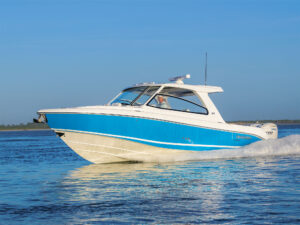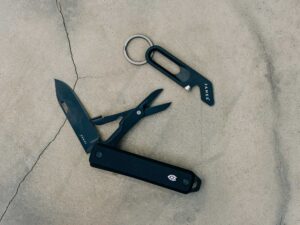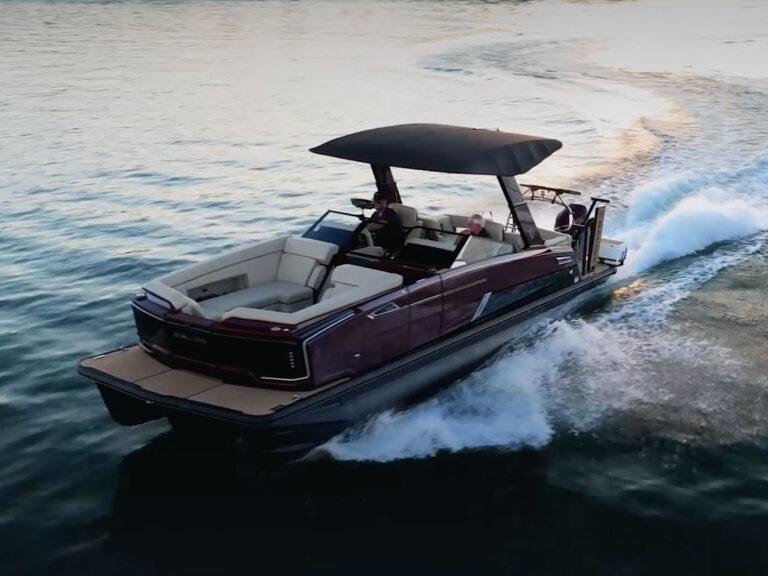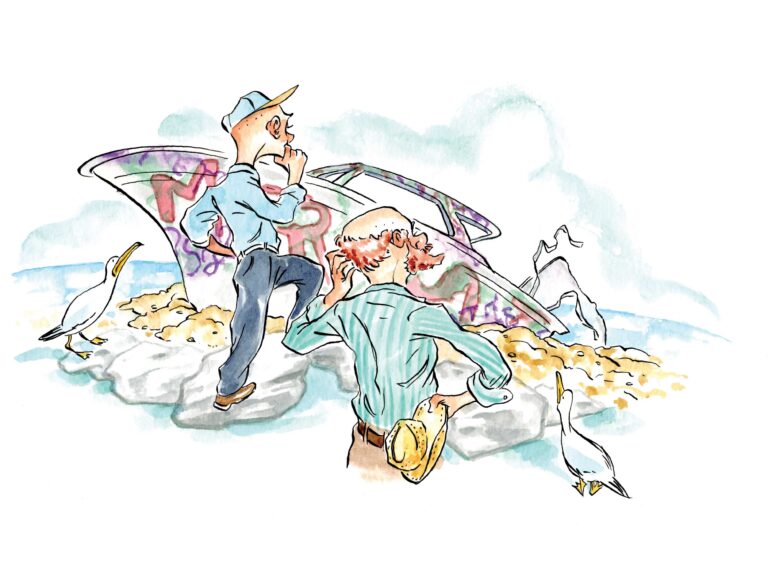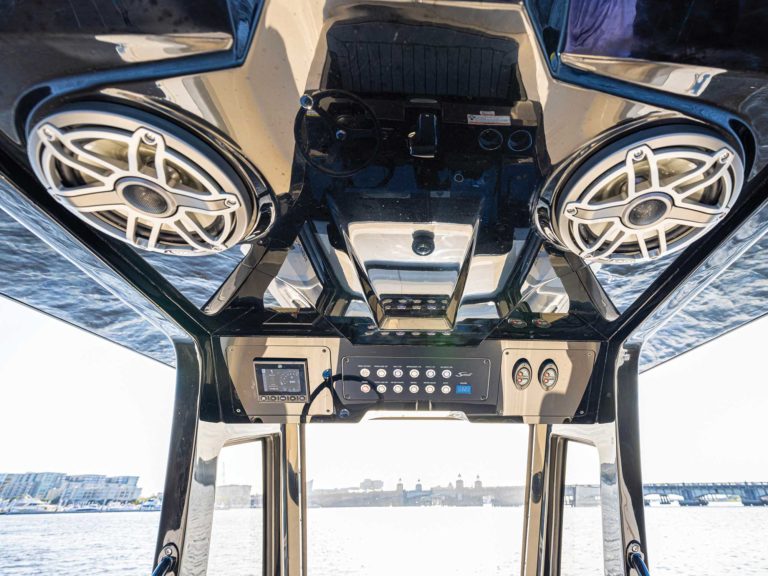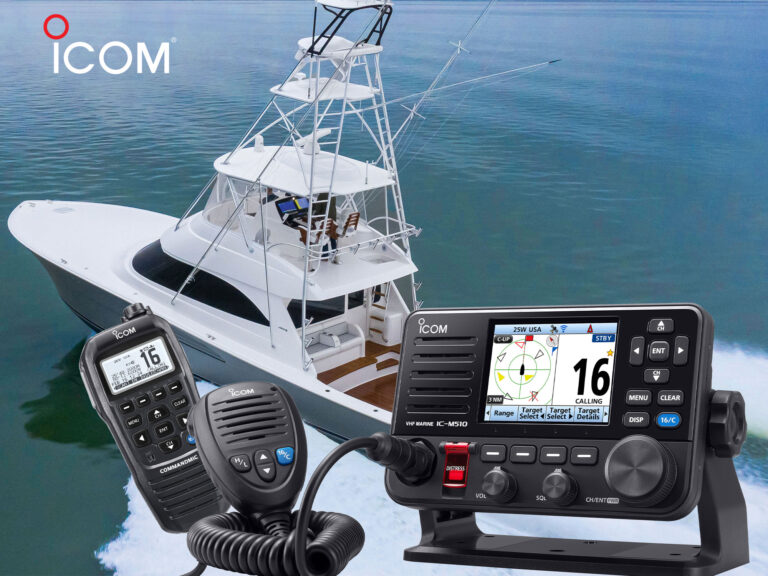At the top of the launch ramp, the trailer suddenly lurched and fell slightly to one side. In the side-view mirror, I could see one of the wheels cocked at an ugly angle. The axle had broken just inboard of the spindle, leaving the offending wheel hanging on by a thin blade of axle tubing. I was lucky.
It would be understandable to ask how having a broken axle left me feeling lucky. I look at it this way: It could have been much worse if the failure had occurred on a crowded highway at 50 mph. So I was lucky to be able to limp to a parking spot where I could work on the problem.
Boat-trailer breakdowns happen all the time. The folks at BoatU.S., who keep track of thousands of requests for roadside assistance that come through its 24-hour dispatch centers, say 77 percent of calls for help are for trailer-related problems. The rest are for problems with tow vehicles. Forty-three percent of trailer breakdowns are due to flat tires, 22 percent to failed wheel bearings, and 12 percent to failed axles. Those are the big three.
So what can you do to keep from making one of those phone calls? And what if, in spite of your best efforts, something does go wrong with the trailer — what are you going to do then? Check out our guide to help you handle a boat-trailer breakdown.

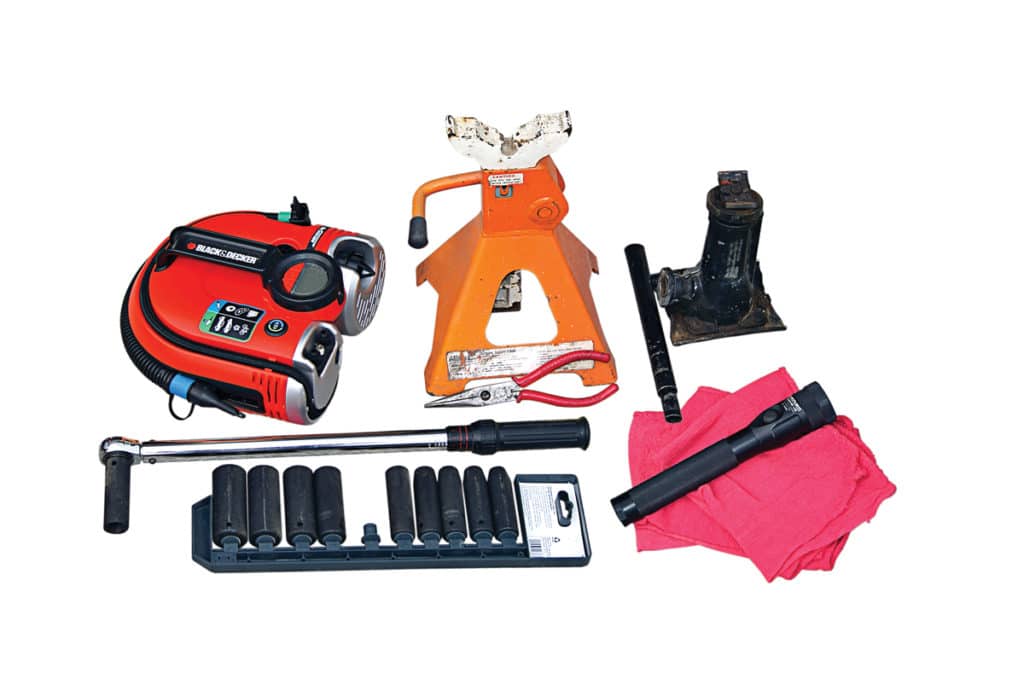
Before traveling, make sure you have tools and equipment for handling a breakdown. The kit should include: *Spare tire
*Boat-trailer jack
*Small jack stand
*Wheel chocks
*Lug wrench (I prefer a torque wrench and a deep socket matching the lug nuts.)
*12-volt air compressor and tire-pressure gauge
*Hammer and small block of wood (if the trailer is equipped with Bearing Buddy protectors, to aid in removal and installation)
*A set of wheel bearings (Even if you have someone else replace your failed wheel bearings, having the right set of bearings with you is an advantage.)
*Bearing grease
*Bearing/spindle nut socket extension and ratchet (or large slip-joint pliers)
*Needle-nose pliers (for pulling a cotter pin)
*New cotter pins
*Roll of paper towels or rags, and plastic bag for disposal
*Hand cleaner
*Flashlight or, better yet, a head lamp
*Safety equipment Rich Johnson

To help prevent failure of tires, inspect them before each use of the trailer. What should you do? (Do all this to the spare tire as well.) •Check the air pressure. The recommended pressure is printed on the sidewall. Low pressure causes excess sidewall flex and heat buildup, which leads to premature failure. •Look for irregularities in the tread. I’ve had two trailer tires suffer internal ply separation (a manufacturing defect). It makes the tread look like a snake that swallowed a gopher. Replace tires that have unusual bulges, bounces or tread wobbles. •Check to see if there are any sidewall cracks caused by age and ultraviolet exposure. •Get the wheels/tires balanced so they don’t beat themselves to death over time. Randy Vance

Despite preventive care, stuff happens. If the stuff that happens to you is tire-related, here’s what you should do: •Follow safety practices outlined in “Roadside Safety Tips.” (below) •Use wheel chocks to hold the trailer steady. •With the jack, raise the axle and remove the dead tire and wheel. If your trailer has a single axle, insert a small jack stand for additional safety. •Install the fresh tire and wheel, gradually tightening lug nuts in a cross pattern (three times around). Torque to the specs designated in your trailer owner’s manual. •Replace the dead tire as soon as possible so that you always have a spare ready for action. Rich Johnson
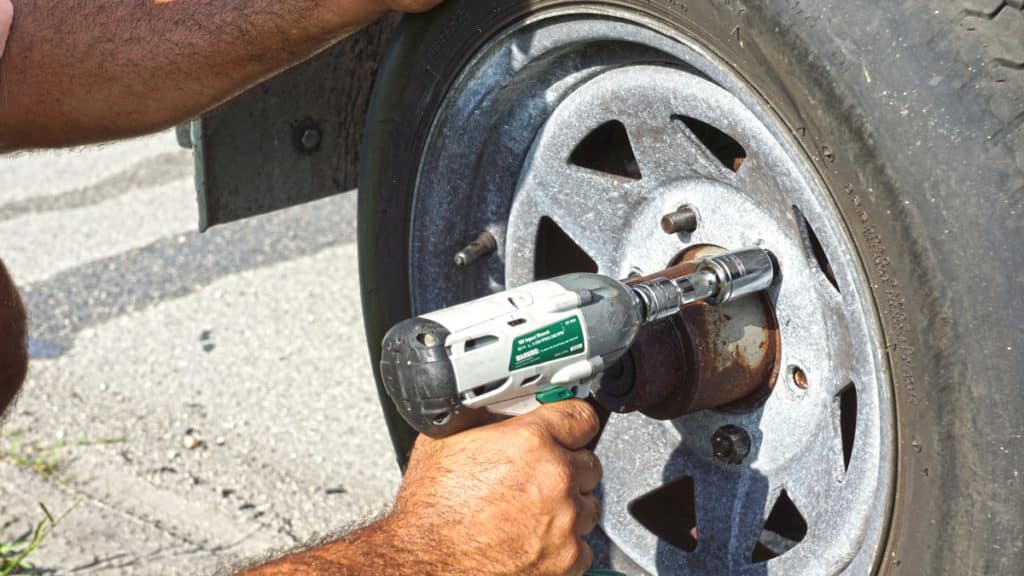
The things that kill wheel bearings are improper adjustment, lack of lubrication and intrusion of dirt and water (especially salt water). •In preparation for the season, dismantle and clean wheel bearings and inspect for signs of overheating or wear. If the bearings have gotten hot, the race may be discolored. Replace if necessary. •While the tire is off the ground, give it a spin. It should rotate freely, without any noise. •Check the grease to make sure bearings are fully protected. Add lube as needed. •Check bearing adjustment by jacking up each wheel, gripping the tire top and bottom and trying to wiggle the wheel. There should be almost zero slop. If the wheel wiggles, the bearing is too loose, so adjust the nut. Randy Vance

How do you know you have a problem with a wheel bearing? Smoke and fire are good indications. A loud screeching noise is a clue, but you don’t want to wait that long to know if the bearings are failing. •During each trip, after driving 10 miles, pull off the road and feel each wheel hub for excess heat. The hub shouldn’t feel like it’s much above ambient temperature. •If the hub is hot, determine if the problem is the bearing or a dragging brake. Raise the tire off the ground and give it a spin. Listen — a brake will sound like fingernails on a chalkboard, and the noise will probably be intermittent; a bearing may sound like you’re grinding rocks, and the noise will be more constant. A bad bearing may also result in excessive play when given the wiggle test. •Unless you’ve changed wheel bearings before, it can be a tricky job. If you’re not sure how to get it done, call in the pros or follow our step-by-step instructions at boatingmag.com/bearings. Rich Johnson

What causes an axle to fail is long-term corrosion that may begin inside the axle tube. •Prevention begins with inspection for signs of corrosion. Look for rust stains or bubbles under a painted surface. •Tap the metal with a steel hammer — good metal rings, while rotten metal thuds. •Remove surface rust and scale by using a wire brush or angle grinder to scrub it. •If the metal is pitted but still sound enough to be saved, coat it with a product such as POR-15 (por15.com), and then paint with a top coat. That fixes the rust only on the outside, though. If metal cancer is growing inside, axle replacement is inevitable. •You might be able to temporarily repair a corrosion-damaged axle by welding on plate or angle iron braces, but it’s better to replace the axle. Overton’s

If an axle breaks, limp to a safe position off the road and call for professional help. Unless you’re carrying welding equipment, metal plate material and clamps, you’re not going to be able to fix it yourself on the side of the road. Order a replacement axle from the trailer manufacturer, and prepare for a fun driveway project. Note: It’s easier to replace an axle if the boat is off the trailer, but it can be done either way. Unless you’re unusually fortunate, it’s only a matter of time until you have an opportunity to experience a trailer breakdown of some sort. With a bit of preparation, though, you’ll sail right through it. Rich Johnson

If you have insurance with roadside assistance, call that number and explain where you are and the nature of the problem. The “big three” in the world of insurance companies that provide roadside assistance are listed below in alphabetical order. AAA emergency road service is available 24/7 by calling 800-222-4357. The Plus RV membership costs $125 per year and includes battery assistance, tire change, lockout service and fuel delivery coverage for eligible trailers: “boat, travel, horse, motorcycle, snowmobile, personal watercraft, golf, car or utility” and small rental trailers. BoatU.S. specializes in boats, trailers and tow vehicles, rendering aid through a nationwide network of more than 20,000 roadside-assist companies. The 24/7 dispatch center is reached at 800-391-4869. For BoatU.S. members, the additional cost for trailer-assist coverage is $14 per year. That buys assistance for flat tires, fuel delivery, lockout service, jump-start and 100 miles of towing assistance for the boat trailer and tow vehicle (while trailering the boat) to a repair facility or safe location of your choice. In the event of a trailer breakdown that renders the trailer unable to be towed, a flatbed truck/trailer will load and haul your boat and trailer to an appropriate repair facility. Good Sam Club specializes in RVs but offers a nationwide network of roadside-assistance resources. Coverage costs about $80 for first-time buyers. The 24/7 dispatch contact number is 800-765-5924. The organization offers flat-tire service, jump-start, locksmith, fuel delivery (up to 5 gallons) and towing to the nearest service facility. Rich Johnson
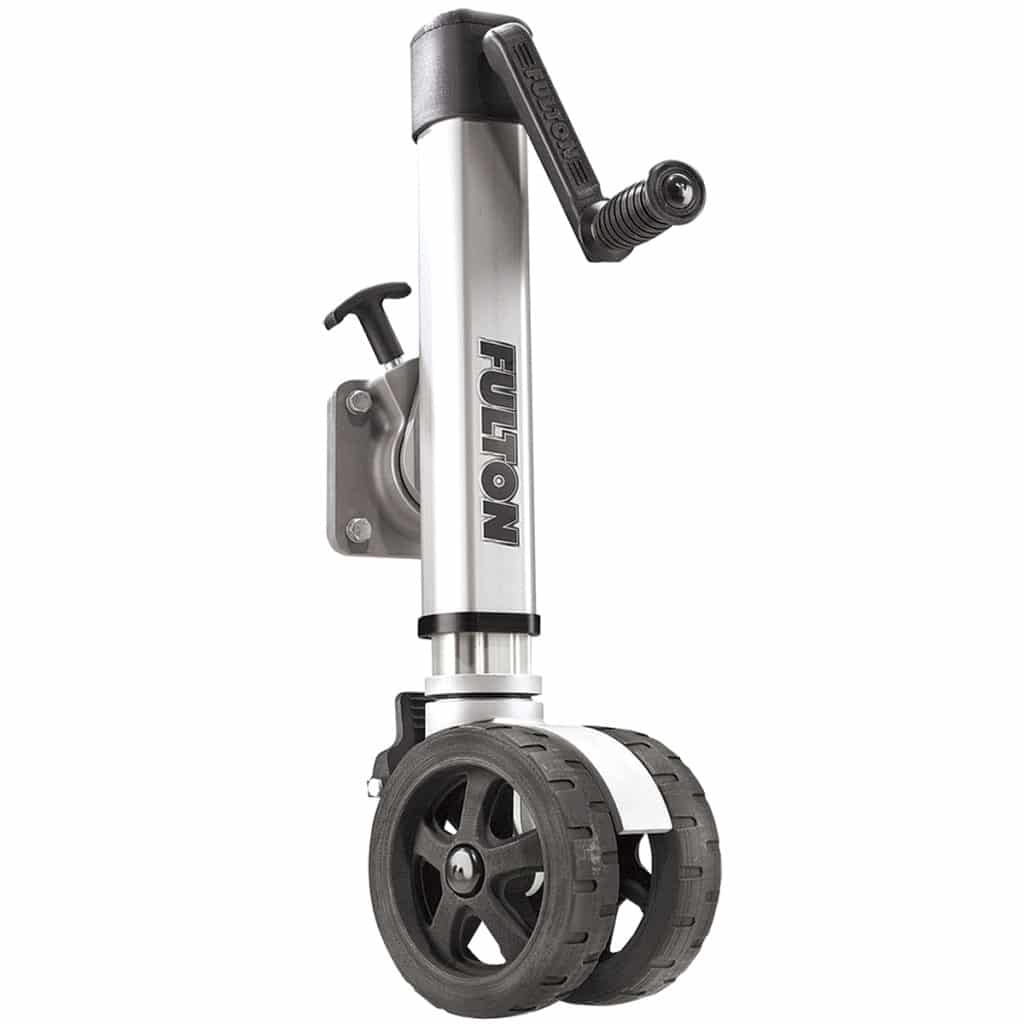
Roadside Safety Tips
If something breaks, you need to get off the road so you aren’t a hazard to other drivers.
Switch on the emergency flasher, and carefully pull off the road the best you can.
When working roadside, wear a highly reflective jacket or vest. Doing so is inexpensive insurance to help prevent getting hit by a passing vehicle. It’s available online at amazon.com.
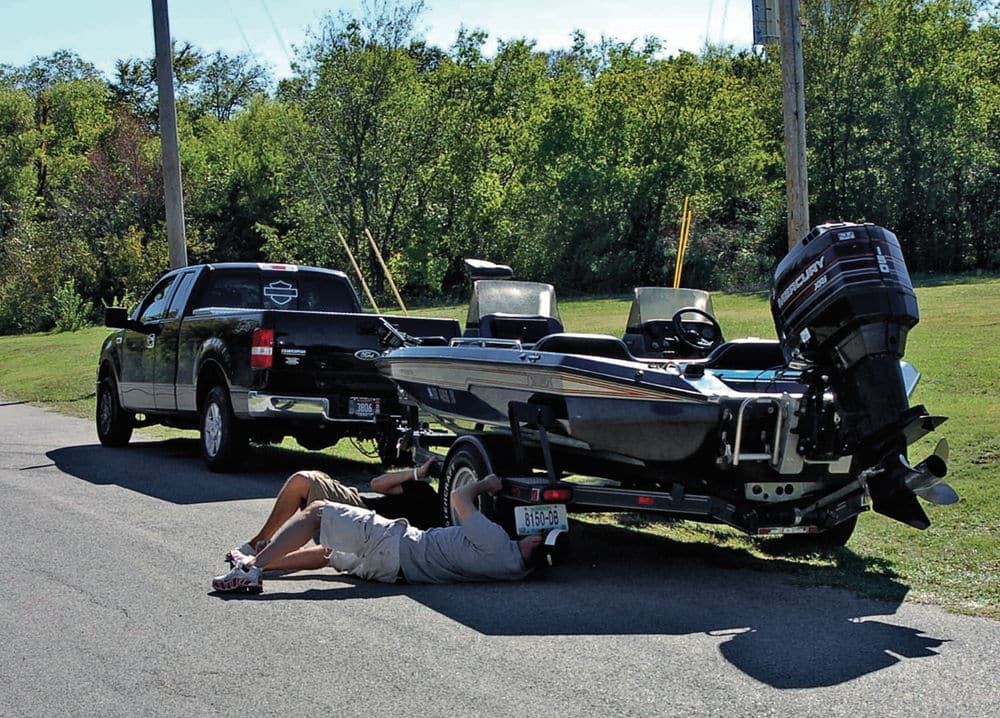
Place warning devices such as flares, lights, reflective triangles, etc. behind and in front of the vehicle. If the area is safe for the use of flares, set the first flare or reflector 20 feet behind the vehicle and the rest intermittently about every 30 feet out to a distance of at least 300 feet. At night, lighted markers or flares are most effective. During daylight hours, add highly visible warning devices such as orange cones.
When using flares, realize that they can be dangerous if used improperly. You’re dealing with fire and molten slag that can drip onto skin, clothing or flammable materials. Never ignite a flare near gas fumes or a liquid fuel spill. For safe use of flares:
Strike the flare and hold it away from your body, angled down to allow molten slag to drip off harmlessly without injuring your hands.
When you reach the spot where you want to place the flare, use the included stand or spike, if so equipped. Don’t use flares near dry foliage, and make sure there is nothing but mineral soil or pavement beneath the flare.
Flares eventually burn out and need to be replaced. A technique for automatically igniting fresh flares is to uncap and place a second flare on the nonburning end of the flare that has been ignited, forming an “L” configuration. As the first flare burns to the bottom, it will automatically ignite the next one. Carry plenty of flares to see you through an extended emergency.
When you’re ready to go, clean up the flare debris, drowning with water any fragments that are still burning. Never step on a flare in an attempt to extinguish it, because that could cause a burn injury.

